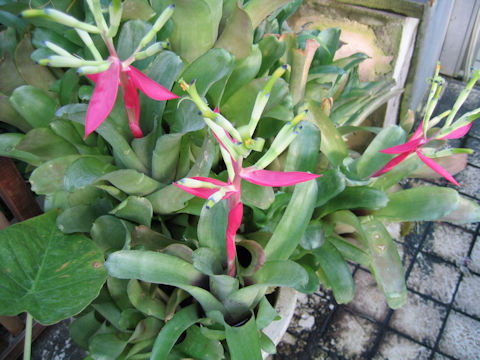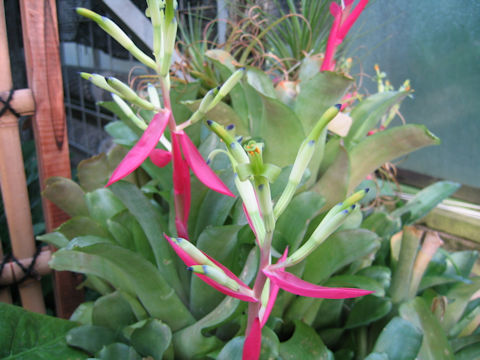 |




|

|
ブラジルが原産です。「パイナップル」に似た葉は、地面から直接伸びてロゼットを形成します。冬から春ごろ、花茎を伸ばして淡い黄緑色の花を咲かせます。それぞれの花の下につく、えんじ色の苞葉が目立ちます。属名は、スウェ-デンの植物学者であったビルベリ(Gustav Johannes Billberg)に因みます。
|

|
パイナップル科ビルベルギア属の常緑多年草で、学名は Billbergia speciosa。英名はありません。
|

|
The Billbergia speciosa belongs to Bromeliaceae (the Pineapple family). It is an evergreen perennial that is native to Brazil. The "pineapple"-like leaves grow directly from the ground to form rosettes. In winter and spring, the flower stalks grow and produce pale yellow-green flowers. The dark red bracts that are attached to the underside of each flower are conspicuous. The genus is named after Gustav Johannes Billberg, a Swedish botanist.
|

|
京都府精華町「京都フラワーセンター」にて、2004年11月27日撮影。
|



